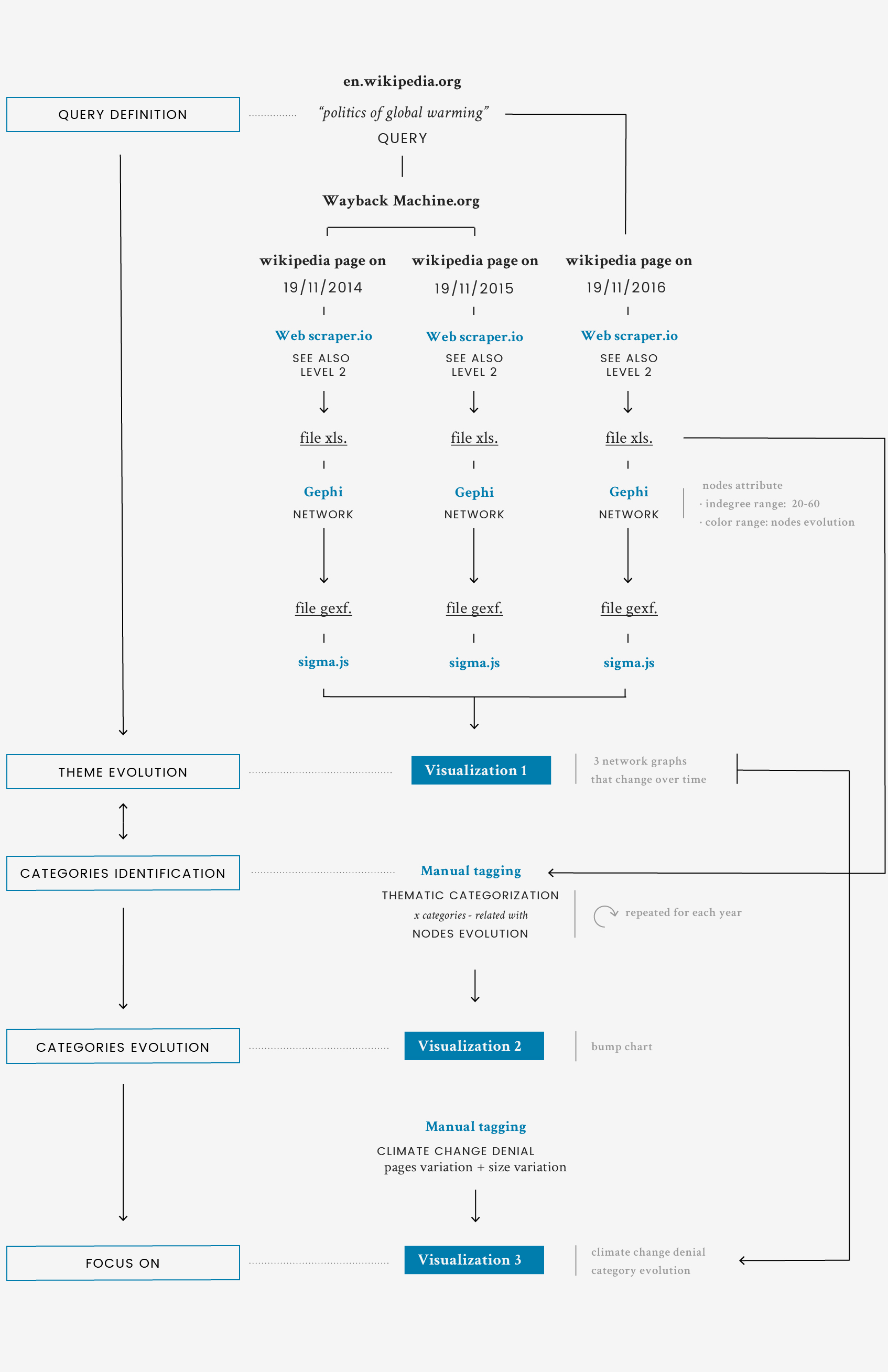Description
Before focusing on a specific time or location it was necessary to have a global understanding of the political debate that revolves around climate change. For this reason the networks showed analyze the Wikipedia page called “Politics of global warming”.They represent all topics related to the chosen item, during three years.
Each node is a Wikipedia page and it is represented in different colors, according to the node evolution. Each page is categorized by subjects and the alluvial diagram shows the quantitative evolution of each page and each subject through time. Some categories are almost unchanged. It’s the case of meeting, which occupies steadily the high-end of the graphics.
During the three years has changed not only the distribution of the subjects, but also the overall number of items related to the main seed. In particular, it highlights during each year the relationship between existing pages, new pages and erased pages. 2016 seems to have been a particularly important year for the political discussion around climate change, because many entries have been added within Wikipedia. Furthermore, the “see also” pages connected to the “Climate change denial” page are changed remarkably. First of all, in 2016 to a subsection of the page “Political position of Donald trump”, referred to his positions about climate change, has appeared. Secondly, we can see a thematic transition from the scientific area to the political and mediatic areas.


